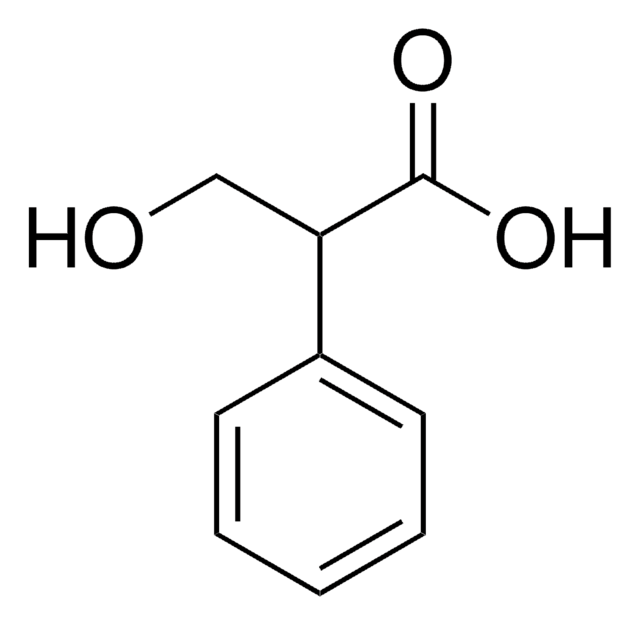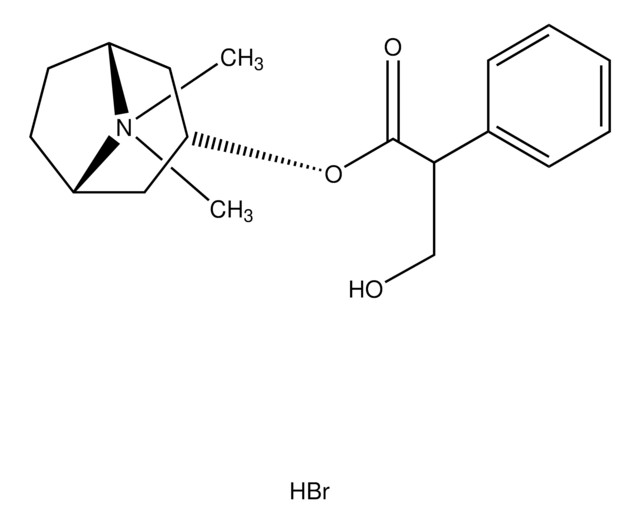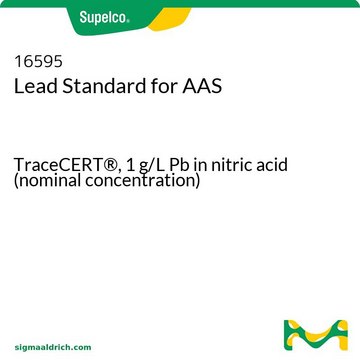Kluczowe dokumenty
11332
Atropine sulfate salt monohydrate
tested according to Ph. Eur.
Synonim(y):
Atropini sulfas, α-(Hydroxymethyl)benzeneacetic acid 8-methyl-8-azabicyclo[3.2.1]oct-3-yl ester, Tropine tropate
About This Item
Polecane produkty
agency
USP/NF
tested according to Ph. Eur.
Poziom jakości
mp
189-192 °C (A) (lit.)
rozpuszczalność
water: soluble 2500 g/L at 4 °C
Zastosowanie
pharmaceutical (small molecule)
ciąg SMILES
O.OS(O)(=O)=O.CN1[C@H]2CC[C@@H]1C[C@@H](C2)OC(=O)C(CO)c3ccccc3.CN4[C@H]5CC[C@@H]4C[C@@H](C5)OC(=O)C(CO)c6ccccc6
InChI
1S/2C17H23NO3.H2O4S.H2O/c2*1-18-13-7-8-14(18)10-15(9-13)21-17(20)16(11-19)12-5-3-2-4-6-12;1-5(2,3)4;/h2*2-6,13-16,19H,7-11H2,1H3;(H2,1,2,3,4);1H2/t2*13-,14+,15+,16?;;
Klucz InChI
JPKKQJKQTPNWTR-CHYDPLAESA-N
informacje o genach
human ... CHRM1(1128) , CHRM2(1129) , CHRM3(1131)
Szukasz podobnych produktów? Odwiedź Przewodnik dotyczący porównywania produktów
Zastosowanie
Działania biochem./fizjol.
Hasło ostrzegawcze
Danger
Zwroty wskazujące rodzaj zagrożenia
Zwroty wskazujące środki ostrożności
Klasyfikacja zagrożeń
Acute Tox. 2 Inhalation - Acute Tox. 2 Oral
Kod klasy składowania
6.1A - Combustible acute toxic Cat. 1 and 2 / very toxic hazardous materials
Klasa zagrożenia wodnego (WGK)
WGK 3
Środki ochrony indywidualnej
Eyeshields, Faceshields, Gloves, type P3 (EN 143) respirator cartridges
Wybierz jedną z najnowszych wersji:
Masz już ten produkt?
Dokumenty związane z niedawno zakupionymi produktami zostały zamieszczone w Bibliotece dokumentów.
Nasz zespół naukowców ma doświadczenie we wszystkich obszarach badań, w tym w naukach przyrodniczych, materiałoznawstwie, syntezie chemicznej, chromatografii, analityce i wielu innych dziedzinach.
Skontaktuj się z zespołem ds. pomocy technicznej







